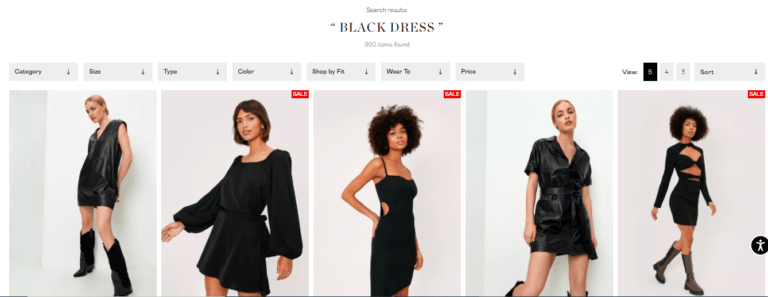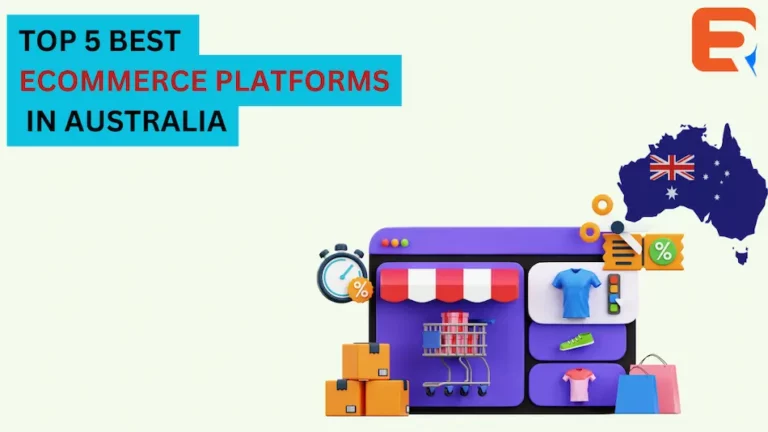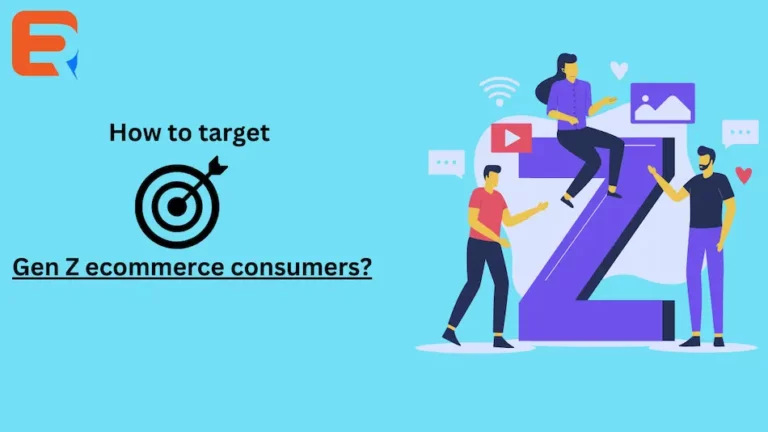The popularity of online shopping is huge. The concept of ordering a product for next-day delivery from the comfort of your couch is appealing to many. Especially if you can’t access a store or the product was out of stock when you looked. Many people like the idea of ordering a product for next-day delivery from the comfort of their couch.
Especially if you can’t get to a store or the product was sold out when you looked. With new eCommerce businesses popping up daily, online retailers must stay competitive to attract customers. Ecommerce merchandising is an important part of capturing the customer’s attention.
What is an e-commerce merchandising?
Ecommerce merchandising is a science as well as an art. Its goal is to increase sales by matching customers with the right products. Ecommerce merchandising is all about how the company sells its products to you. Branding, product placement, engaging images, and new ways to display products are all part of eCommerce merchandising.
The store’s ultimate goal is to get the customer to add to the cart. Customers’ behaviour can be tracked throughout their journey. Consumers are gently persuaded to make a purchase using innovative e-commerce merchandising strategies.
Why is Ecommerce Merchandising important?
Because of the growing popularity of online shopping, eCommerce merchandising is more important than ever. Showcasing products in a simple yet aesthetically pleasing manner has become an art form, and many websites experiment with e-commerce merchandising to capture the customer’s attention.
This method of displaying products is important for making the website look neat and accessible and for converting site visitors into paying customers. Ecommerce merchandising can influence consumer purchasing habits by strategically placing CTAs (calls to action), reminders for abandoned shopping carts, and “order again” buttons.
Ecommerce merchandising can entice customers, assist businesses in displaying a diverse range of products, Increase website traffic with SEO-optimized listings, Publicize specific products/special offers and turn visitors into buyers.
Strategies for a Profitable Online Merchandising Campaign
Merchandising is the key to eCommerce success. The right online merchandising strategy can increase sales, engage customers, and direct them to exciting products.
Mobile-first
Because of the increased mobile users and mobile web usage, most businesses are increasingly opting for a mobile-first strategy. Approximately 78% of people use their smartphone instead of a laptop and access approximately 70% of media through their phone. As a result, responsive web design has become an urgent necessity.

It refers to the process of converting your desktop website to work on mobile devices. This allows you to reach more customers, develop strong relationships with them, and provide a better customer experience. Getting the mobile app is another step in this strategy to get the most out of it.
Customer feedback and user-generated content
Online shoppers conduct research before purchasing by gathering information about the product they wish to purchase. Reading about other people’s experiences, product reviews, and ratings is an important part of purchasing. Don’t pass up any opportunity to display compliments/reviews from previous customers. As part of your online merchandising strategies, you should consider publishing user-generated images, ratings, and reviews.
Personalized recommendations
Personal recommendations are generally based on what the current visitor has clicked on or previously purchased, what other customers have purchased, and items currently in the cart or were once abandoned. Personalized online merchandising can boost AOV, accelerate upsell and cross-sell, and assist customers in finding what they are looking for.

Automated merchandising
It is nearly impossible to track and control your online merchandising in real-time. Your merchandising must be fully automated. Automated merchandising monitors specific consumer behaviours and trends in online shopping, which vendors can use to boost sales.
Automated merchandising aims to predict consumer purchasing behaviour and respond with shopping suggestions. Automated merchandising is electronic commerce (e-commerce) that combines personal electronic data like Web searches with predictive analytics. Predictive merchandising and personalized product recommendations are other terms for automated merchandising.
Search Merchandising
Search Merchandising, a term that combines the concepts of On-site Search and Product Merchandising hasn’t been around for long and isn’t necessarily a widely accepted concept among retail professionals. It all boils down to combining traditional search techniques such as faceted search and navigation, autocomplete, recommended products, recent searches, related queries, and so on to create seamless, personalized, one-of-a-kind, and highly profitable product search experiences.

In addition to those boost-and-bury rules, it also incorporates behaviour data and employs sophisticated machine learning algorithms to automatically sort products based on relevancy, popularity, and personal taste.
Visual merchandising
Display product descriptions, specifications, ratings, and reviews entirely, but when a purchase is imminent, the customer must see the product. Use videos, images from various angles, one image for each colour on the same product, and allow your customers to zoom in on each image to get a good up-close look at the product.
Use quality visual merchandising on your eCommerce store to make it easy for potential customers to order from you.
Video content
It is good to include videos that demonstrate how to use the product in question. The most effective way to market a product is through video. You can increase sales and brand awareness by creating innovative, high-quality videos.
The ideal product page
Make sure your product pages are perfect by using good copies that sell. A successful product page should include one short and one long explanation for each product, as well as nice photos, videos, and customer ratings.
4 Ways Ecommerce Merchandising Has Changed
Implementation of artificial intelligence (AI)
From healthcare to law, many industries have already been disrupted by AI technology. It has also started to play an important role in eCommerce with time. Since the early days of the internet, websites have come a long way.
They’ve evolved to be much more user-friendly, particularly in the realm of eCommerce.
Many features we know and use today, such as product recommendations, customer service requests, and augmented reality website experiences, have been made possible by artificial intelligence algorithms. employees in brick-and-mortar stores are expected to provide all of these features.
When the store is busy or understaffed, it cannot be easy to maintain high levels of customer service. This is never an issue when shopping online.
Adapting to the browser of the user.
In marketing, you want the customer journey through the marketing funnel to be as easy as possible. When consumers enter the store, they are welcomed, asked if they need assistance, and guided through the purchasing process. The same is true for online merchandising. One of the most significant changes in eCommerce merchandising is adapting to the user’s browser.

As a society, we’ve progressed from desktop browsing to tablet browsing to mobile phone browsing – all of which are still in use. We still send emails and faxes even though we have advanced office phone systems that allow us to video call and text. As a result, any eCommerce store must recognize how the customer accesses the store and adjust the layout accordingly. When usability is poor, and customers find it difficult to navigate a site designed solely for desktop browsing, the bounce rate may be high.
Advanced inventory management
Inventory management has become more sophisticated as online shopping has grown in popularity over the years. Stock may be shipped from the same warehouse for larger businesses with brick-and-mortar and online stores. As a result, it’s critical to keep an eye on what’s going on and where.
This has compelled inventory managers to rethink how they work. In traditional retail, the company can only sell what it has on hand. As a result, adequate stock supplies are required. Many businesses hire experts to forecast trends in specific areas to determine which items are more popular. It all comes down to supply and demand.
Increased personalization
Personalizing the shopping experience is another way that eCommerce merchandising has evolved. Previously, when eCommerce stores first appeared, there were technological limitations in tracking users, customizing pages, and creating advertisements. Nowadays, you can see who is visiting your site in just a few clicks and get a better sense of your demographic and who to target with eCommerce marketing in the future.
Wrap Up
Every year, eCommerce merchandising evolves. New techniques and merchandising strategies emerge to entice customers to spend their money.
One of the essential aspects of online merchandising is that it is extremely visual – and should look the same on any device. When you’re developing a new website or app, the brand imagery on both should be as similar as possible. Customers appreciate consistency.
So you now have a better understanding of why eCommerce merchandising is essential for every online business. You can then implement new features to improve business processes and set your company apart from the competition.
Frequently Asked Questions
What is a merchandise strategy?
Everything you do to sell your products once a potential customer enters your store is referred to as merchandise. Because the sales process frequently begins with the eyes, merchandising typically entails visually appealing effects to encourage purchases.
The tactics that contribute to selling goods and services to customers for profit are merchandising strategies.
What is online visual merchandising?
It is a strategy that employs visual engagement to entice customers to browse, explore, and purchase your products.
What is a merchandise strategy?
What is online visual merchandising?




